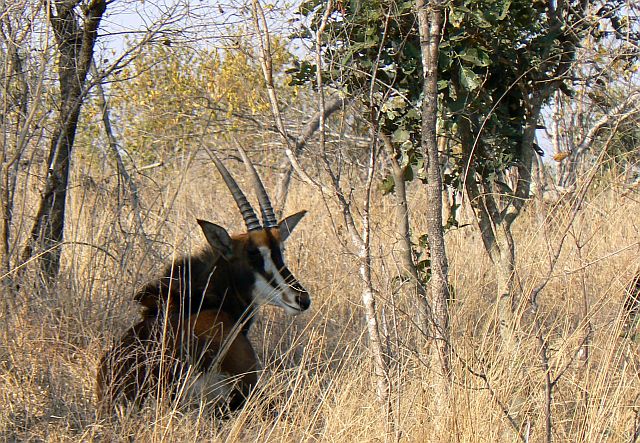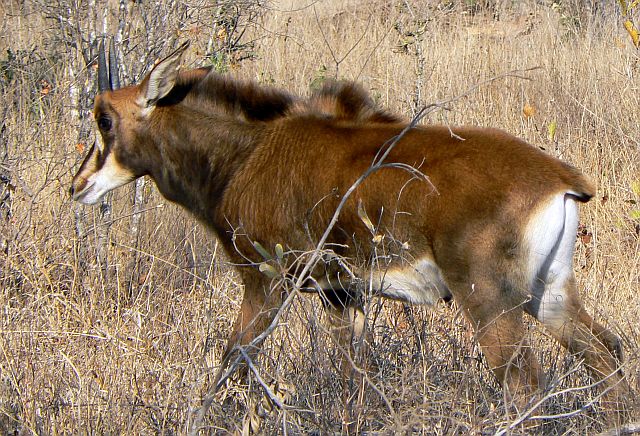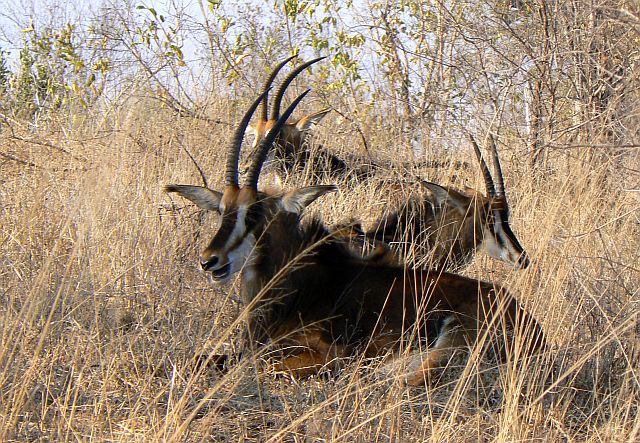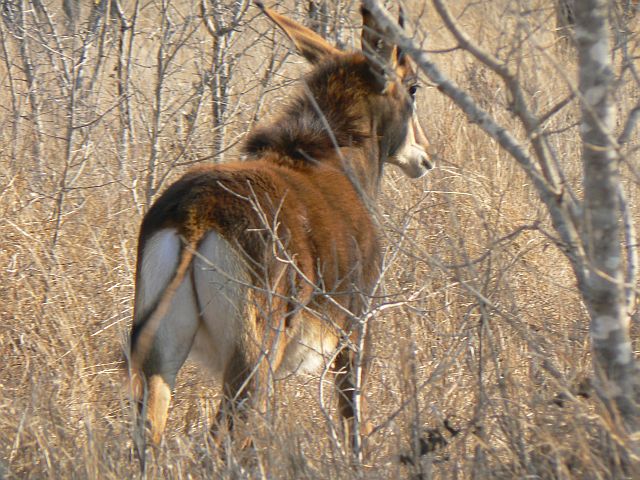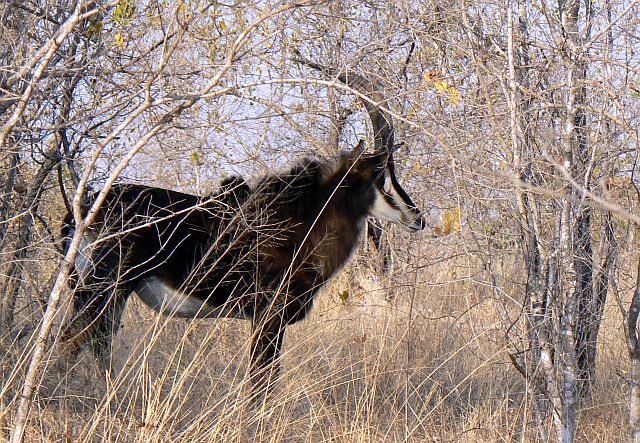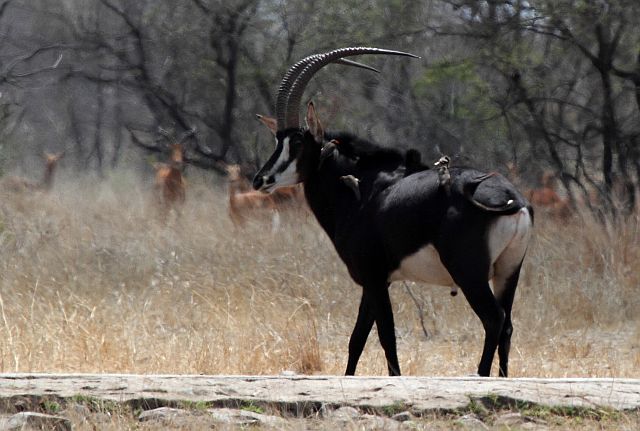Sable Antelope
Posted: Mon Sep 30, 2013 9:07 pm
Sable Antelope
Hippotragus niger
Swartwitpens
Height -1,35m
Weight – 235kg.
Both sexes carry the same curved horns.
Males upper body parts are dark brown to black with a satinlike sheen, while the underbelly and back of thighs are white. Also have white markings on the face. Dark mane extends from the top of the neck to the shoulders.
Females are slightly lighter in colour, ranging from light brown to a dark brown with the white underbelly and white markings on the face.
Strikingly coloured and with powerful scimitarlike horns, the sable is undoubtedly lord of the antelope. Aloof from other species, fearful even to some predators, its approach will encourage other antelope to retire meekly, even spotted hyenas, wild dogs, cheetahs and leopard are very reluctant to challenge this courageous, pugnacious and dangerous fighter. Even lions have been known to come off second best – gored to death by those sharp, deadly horns. They dominate at a waterhole. Seen here at the Ngwenyeni Waterhole on the S36 - the zebra had to wait till the sable were done
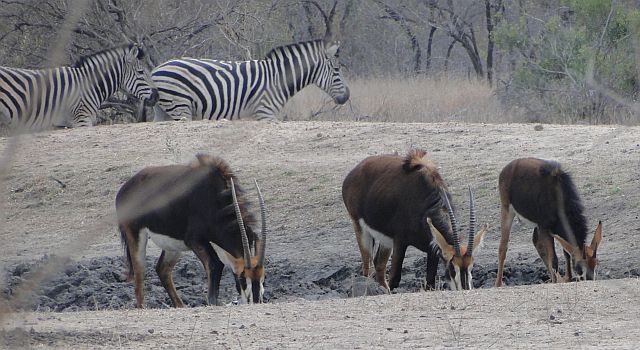
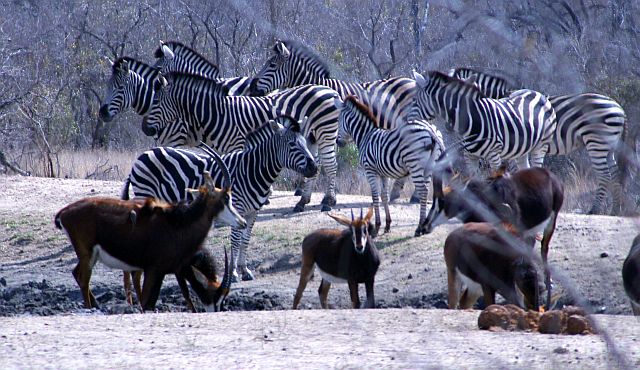
You will often see sable in herds of up to 30.
Seen at Chobe (Botswana)
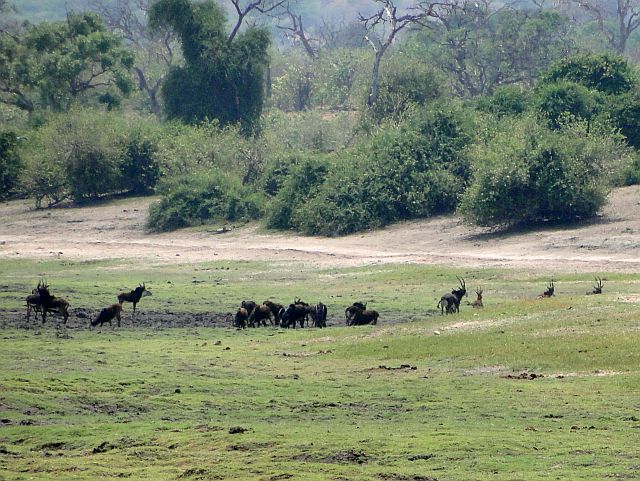
And at Mahango Game Park (Namibia)
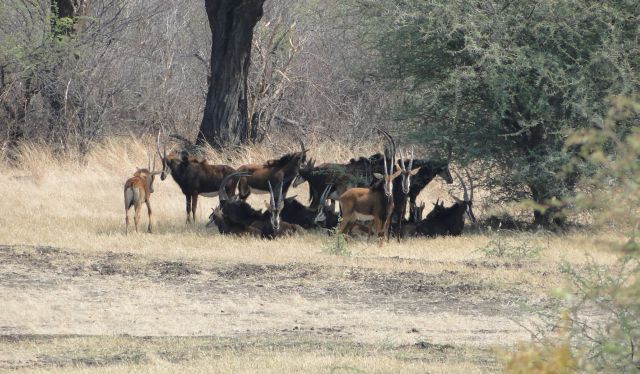
Adult bulls establish their own territory and during mating season will defend it, although major injuries are rare. Young males know better than to tangle with their elders, and split up into separate bachelor groups until they are old, wise and strong enough to make a successful challenge against a territorial bull.
A breeding herd is led by the territorial bull but a dominant cow will take the initiative to lead the herd to new pastures and water.
In our experience the best road in Kruger for sables is the S36 and the best park in South Africa for sables is probably Mokala.
Distribution: Kruger, Zimbabwe, Northern Botswana, Caprivi, Zambia, Malawai, Mozambique, Southern Angola, North Eastern Tanzania, South East Kenya.
Habitat: Prefer open, fairly dry savannah of mixed bush and grassland.
Diet: Mainly grass but also leaves and fruit occasionally
A single calf is born and the gestation period is about 270 days.
References:
1. Fourie. P.F. Kruger National Park. Questions and Answers
2. Gilliomee J, Geertsema H et al. Animals of the Kruger Park
Hippotragus niger
Swartwitpens
Height -1,35m
Weight – 235kg.
Both sexes carry the same curved horns.
Males upper body parts are dark brown to black with a satinlike sheen, while the underbelly and back of thighs are white. Also have white markings on the face. Dark mane extends from the top of the neck to the shoulders.
Females are slightly lighter in colour, ranging from light brown to a dark brown with the white underbelly and white markings on the face.
Strikingly coloured and with powerful scimitarlike horns, the sable is undoubtedly lord of the antelope. Aloof from other species, fearful even to some predators, its approach will encourage other antelope to retire meekly, even spotted hyenas, wild dogs, cheetahs and leopard are very reluctant to challenge this courageous, pugnacious and dangerous fighter. Even lions have been known to come off second best – gored to death by those sharp, deadly horns. They dominate at a waterhole. Seen here at the Ngwenyeni Waterhole on the S36 - the zebra had to wait till the sable were done


You will often see sable in herds of up to 30.
Seen at Chobe (Botswana)

And at Mahango Game Park (Namibia)

Adult bulls establish their own territory and during mating season will defend it, although major injuries are rare. Young males know better than to tangle with their elders, and split up into separate bachelor groups until they are old, wise and strong enough to make a successful challenge against a territorial bull.
A breeding herd is led by the territorial bull but a dominant cow will take the initiative to lead the herd to new pastures and water.
In our experience the best road in Kruger for sables is the S36 and the best park in South Africa for sables is probably Mokala.
Distribution: Kruger, Zimbabwe, Northern Botswana, Caprivi, Zambia, Malawai, Mozambique, Southern Angola, North Eastern Tanzania, South East Kenya.
Habitat: Prefer open, fairly dry savannah of mixed bush and grassland.
Diet: Mainly grass but also leaves and fruit occasionally
A single calf is born and the gestation period is about 270 days.
References:
1. Fourie. P.F. Kruger National Park. Questions and Answers
2. Gilliomee J, Geertsema H et al. Animals of the Kruger Park
